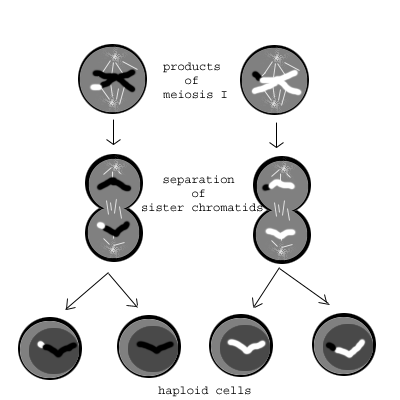Please wait while we process your payment
If you don't see it, please check your spam folder. Sometimes it can end up there.
If you don't see it, please check your spam folder. Sometimes it can end up there.
Please wait while we process your payment
Get instant, ad-free access to our grade-boosting study tools with a 7-day free trial!
Learn more



This site is protected by reCAPTCHA and the Google Privacy Policy and Terms of Service apply.
Create Account
Select Plan
Payment Info
Start 7-Day Free Trial!

Annual
2-49 accounts
$22.49/year + tax
50-99 accounts
$20.99/year + tax
Select Quantity
Price per seat
$29.99 $--.--
Subtotal
$-.--
Want 100 or more? Request a customized plan
You could save over 50%
by choosing an Annual Plan!

SAVE OVER 50%
compared to the monthly price!
| Focused-studying | ||
| PLUS Study Tools | ||
| AP® Test Prep PLUS | ||
| My PLUS Activity | ||
$22.49/month + tax
Save 25%
on 2-49 accounts
$20.99/month + tax
Save 30%
on 50-99 accounts
| Focused-studying | ||
| PLUS Study Tools | ||
| AP® Test Prep PLUS | ||
| My PLUS Activity | ||
No Fear provides access to Shakespeare for students who normally couldn’t (or wouldn’t) read his plays. It’s also a very useful tool when trying to explain Shakespeare’s wordplay!
Erika M.
I tutor high school students in a variety of subjects. Having access to the literature translations helps me to stay informed about the various assignments. Your summaries and translations are invaluable.
Kathy B.
Teaching Shakespeare to today's generation can be challenging. No Fear helps a ton with understanding the crux of the text.
Kay H.
No Fear provides access to Shakespeare for students who normally couldn’t (or wouldn’t) read his plays. It’s also a very useful tool when trying to explain Shakespeare’s wordplay!
Erika M.
I tutor high school students in a variety of subjects. Having access to the literature translations helps me to stay informed about the various assignments. Your summaries and translations are invaluable.
Kathy B.
Teaching Shakespeare to today's generation can be challenging. No Fear helps a ton with understanding the crux of the text.
Kay H.
Create Account
Select Plan
Payment Info
Start 7-Day Free Trial!
You will only be charged after the completion of the 7-day free trial.
If you cancel your account before the free trial is over, you will not be charged.
You will only be charged after the completion of the 7-day free trial. If you cancel your account before the free trial is over, you will not be charged.
Order Summary
Annual
7-day Free Trial
SparkNotes PLUS
$29.99 / year
Annual
Quantity
51
PLUS Group Discount
$29.99 $29.99 / seat
Tax
$0.00
SPARK25
-$1.25
25% Off
Total billed on Nov 7, 2024 after 7-day free trail
$29.99
Total billed
$0.00
Due Today
$0.00
Promo code
This is not a valid promo code
Card Details
By placing your order you agree to our terms of service and privacy policy.
By saving your payment information you allow SparkNotes to charge you for future payments in accordance with their terms.
Powered by stripe
Legal
Google pay.......



Please wait while we process your payment

Sorry, you must enter a valid email address
By entering an email, you agree to our privacy policy.
Please wait while we process your payment

Sorry, you must enter a valid email address
By entering an email, you agree to our privacy policy.
Please wait while we process your payment

Your PLUS subscription has expired
Please wait while we process your payment
Please wait while we process your payment

Meiotic Division II
Picking up where we left off in the previous section, at the end of meiotic division I we have two independent cells. One cell contains the maternal homologous pair with a small segment of crossover from the paternal chromosome. The other cell contains the paternal homologous pair with a small segment of crossover from the maternal chromosome. Once the nuclear envelope has re-formed after the first meiotic division, the cell enters a short interphase. This interphase is not as specific as mitotic interphase; during meiotic interphase, chromosomes may decondense as the cell waits to proceed with meiosis.
Meiotic division II occurs through the similar phases as mitosis and meiotic division I. They are called prophase 2, prometaphase 2, metaphase 2, anaphase 2, and telophase 2 to distinguish them from the first round of meiotic division. One very important difference between the events of meiosis I and II is that no further genetic reassortment takes place during prophase 2. As a result, prophase 2 is much shorter than prophase 1. In fact, all of the phases of meiosis 2 proceed very quickly. One other point to remember is that the two cells that result after meiotic division I enter meiosis II very quickly. During the brief interphase period, no further DNA replication takes place!
During meiosis II, chromosomes align at the center of the cell in metaphase 2 exactly the way they do in mitotic metaphase. In anaphase 2, the sister chromatids are separated, again, in the same fashion as in mitotic anaphase. The only difference is that since there was no second round of DNA replication, only one set of chromosomes exist. Thus, when the cells split at the end of meioisis II, haploid cells result.

The result of meiotic division II is four haploid cells. One cell is composed completely of a maternal homologue, another of a maternal homologue with a small segment of paternal DNA, another complete paternal homologue, and a final paternal homologue with a small segment of maternal DNA. At this point, we have created germ cells. Other processes occur to mature these cells into gametes which, in higher organisms, then go on to work together in sexual reproduction to create new individuals.
Please wait while we process your payment





